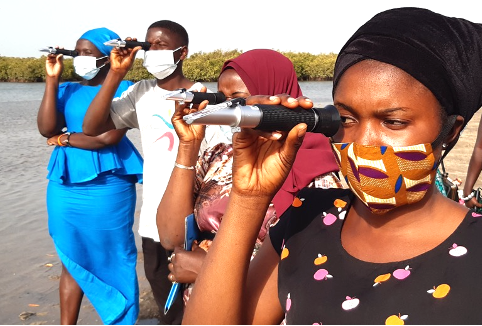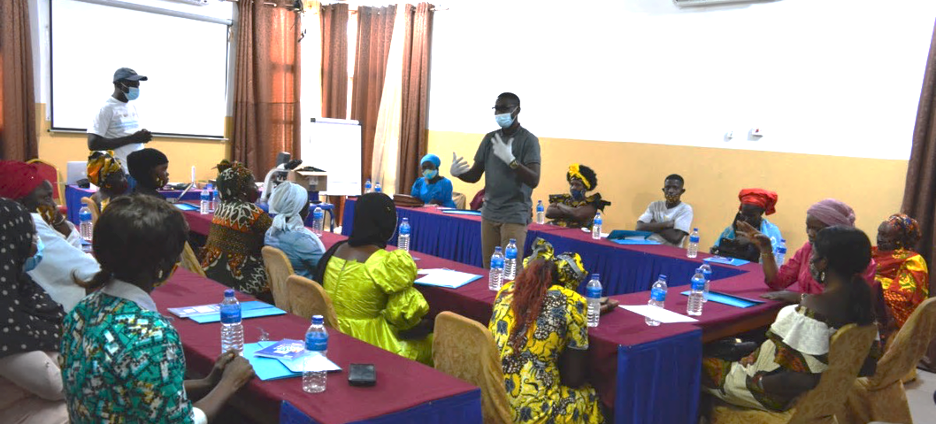Country
Profiles
Country
Networks
Country
Associations
- Date
UCC scientists build capacity of TRY Oyster Women Association on oyster ecology
By Ernest Obeng Chuku
The University of Cape Coast (UCC), as part of its initial field research visit to The Gambia in the first phase of the Women Shellfishers and Food Security Project, planned a training session for some members of the TRY Oyster Women’s Association (20 women and 5 men). The training was outlined to deepen resource users' understanding of basic biological and environmental principles of oyster ecology to enhance their co-management efforts.
The theme for the training was “Oyster Ecology for Improved Co-Management in The Gambia”. The training was organised with the aims of building the capacity of women shellfishers on oyster ecology for better implementation of the community-based management of oyster stocks in mangrove and estuarine systems in The Gambia and encouraging the youth to get involved in the oyster business as a source of economic empowerment and as a tool for natural resource conservation. The trainers from the UCC, Dr Isaac Okyere and Mr Ernest Chuku of the Centre for Coastal Management, were supported by officials of TRY, namely Fatou Janha Mboob, Rose F Manga, and Dawda Saine, for the successful delivery of the training.
The training was conducted with a participatory and practical approach, beginning with a video demonstration of water quality monitoring by oyster harvesters in the Densu Estuary in Ghana. This stimulated several questions from the participants. These questions were then explained along the lines of the planned training topics. By the end of the training, participants were taken through lessons on oyster habitats, biology and water quality.
Key water quality parameters for the survival and optimum reproduction of the oyster, including temperature, salinity, turbidity and dissolved oxygen, were explained. Sex determination and reproduction (fertilization) were highlighted. There was a demonstration of oyster gonads under the microscope, which helped participants appreciate the sex gametes of oysters. Participants took turns viewing oyster sex cells under the microscope and drawing the shapes of cells as observed.
A field trip to the Lamin area of the Tanbi system allowed the participants to experience first-hand the practical use of the water quality equipment provided to TRY by the project, as well as take readings that were further explained and related to the ecology of oysters, as already discussed during the class session.
Training Highlight 1: A highlight of the training was the high level of interest shown by the women and youth participants, especially the youth, in wanting to understand the science of breeding/reproduction in oysters and the factors responsible for the proliferation of the species.
Training Highlight 2: After explaining water quality parameters to participants, a representative from TRY led all demonstrations on using equipment to measure water quality. The TRY rep was given tutorials on all the equipment, including calibration and the procedure for measuring water parameters. Then, she was allowed to teach the participants how to conduct water quality measurements and demonstrate the same in the field. The participants appeared to have picked up the demonstration very well as they took turns to practice using the refractometer (optical salinometer) seamlessly.

Training Highlight 3: Another highlight was that the participants received clearer explanations of some inaccurate “facts” they had held on to over the years, an example being the male and female characterisation of oysters. To the participants at the training, “male” and “female” in oysters were an issue of the shell valves, as they had purportedly learnt from previous training on oyster farming. They held on to the anecdote that the female, i.e., the left cupped valve of the shell, produced more eggs because of a black mark (apparently the adductor muscle scar) in the inner shell. The trainers, therefore, took the time to explain the reason for the preference for the left valve, mainly due to its larger surface area relative to the right valve. Although the earlier notion made it quite challenging to explain reproduction with reference to male and female sexes from the onset, an explanation of broadcast fertilisation and demonstration of the sex cells under a compound microscope brought to bear a clear understanding of the reproduction process in oysters.

